What does it take to build an impact-driven organisation? In this blog, I get back to basics to hear from leaders working on the ground to respond to local needs and challenges. Speaking to leaders of established small and medium sized charities, social enterprises, and community-based organisations in Sussex, we explored the individual as a leader, including what drives them and their organisations on the journey to achieve their purpose. These smaller organisations, less fixed in their structures and systems, reveal insights about their successes and failures, what differentiates their organisations, how they learn and improve, and how they account externally for their impact, in order to work towards the possibility of positive impact in the world.
Lessons on Customer Empowerment from Women in Rural India
People who work on financial inclusion often make assumptions about customers and what drives their choice and use of financial services. But do we know how customers feel about their ability to engage and use these services? CGAP is seeking to answer this question and test out some initial ideas as it explores the concept of empowerment and the role it can play in building customer trust and confidence.
Women in Philki village in India’s eastern Bihar state, where I spent some time two years ago and again recently, offer insights. Women in rural Bihar often handle household finances, as many men migrate to cities for work. In Philki, they had their first taste of branchless banking two years ago when a kiosk resembling a brick-and-mortar branch, called a Customer Service Point (CSP), opened with two agents staffing it. Initially, the women in the village were enthusiastic but somewhat skeptical. “Will this bank run away?”was a phrase I heard repeatedly. They talked of withdrawing money from the kiosk, but not of conducting other transactions.
When I visited Philki and a few neighboring villages more recently, however, doubts about the CSP “running away” had disappeared. In addition, almost all of the women I spoke with were not only withdrawing money from the kiosk but making deposits. This new confidence was striking.
BUILDING A CLIENT-FOCUSED BUSINESS MODEL
"We will never be a leader in client service" a senior AMK manager told me. Indeed in the competitive Cambodian microfinance market many clients might choose another microfinance institution over AMK as its loan disbursement is slower and more time-consuming for clients and its loan sizes are smaller. Coming from an organisation that is proudly client focused, this struck me as strange.
AMK, serving more than 360,000 people, is now the largest MFI in Cambodia in terms of outreach. How can an organisation that invests heavily in understanding and responding to the needs of its clients be less customer friendly than others? Answering this question gets to the heart of the approach of an organisation that has often taken the “road less travelled” in the way it does business. If fast loan disbursement (which clients might prefer, and which other MFIs are prepared to provide) means compromising the detailed loan appraisal process that ensures the success of a client’s investment and ensures they are not over-indebted, AMK is just not interested. AMK recognises the importance of matching loans to client capacity to repay, not just whether they have sufficient collateral to cover them in the event of a default. Central to the appraisal process is a visit to the client’s home which experience has shown is critical to get an accurate understanding of the client’s situation. This takes time, is hard work for staff, and involves some inconvenience for clients. Other MFIs have long abandoned this step, but AMK has made this a mandatory part of their lending process, and implemented a “zero-tolerance” policy, with disciplinary action for client officers who neglect the visit, and checks as part of the internal audit process.


